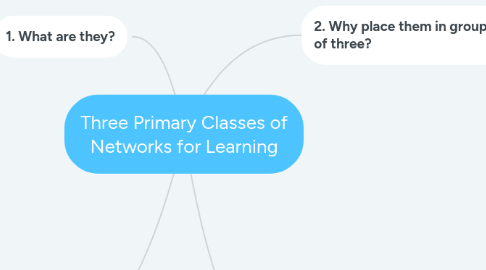
1. 1. What are they?
1.1. Networks in the sense of this chapter are connections in the brain that have some function. There are many different recognized networks in the brain, but the focus for learning is on these three:
1.1.1. Affective
1.1.1.1. Typically found in the center of the brain, the affective network sets priorities, motivates and engages learning and behavior. This is the "why" of learning - encouraging us to learn.
1.1.2. Recognition
1.1.2.1. This network is found largely in the back of the brain and is responsible for sensing and perceiving information around us and transferring that into knowledge. This is the "what" of learning - allowing us to process information.
1.1.3. Strategic
1.1.3.1. The strategic network is mainly found at the front of the brain and works to plan, organize and initiate actions. This is how we plan and carry out tasks.
2. References
2.1. Meyer, A., Rose, D.H., and Gordon, D. (2012). Universal design for learning. Retrieved from http://udltheorypractice.cast.org/reading?11&loc=chapter2.xml_l1969839.
2.2. UDL Core Principles and the Brain. (n.d.). Retrieved from UDL Core Principles and the Brain | UDL Resource
3. 2. Why place them in groups of three?
3.1. Though there are many various types of networks in the brain, narrowing them down to three simplifies it down to a logical level seen in many other areas of learning.
3.1.1. When observing nervous systems throughout nature we see three types of neurons. In humans we can use this concept to divide the networks for learning.
3.1.1.1. Neurons that bring information to the nervous system.
3.1.1.2. Neurons that carry information out of the nervous system
3.1.1.3. Neurons that represent the basis of the creature by connecting other neurons.
3.1.2. Other Examples in Education/Business (you should notice that the names of functions of these networks are similar to the networks seen in part 1):
3.1.2.1. Lev Vygotsky's Three Prerequisites for Learning
3.1.2.1.1. Engagement with the learning task
3.1.2.1.2. Recognition of the information to be learned
3.1.2.1.3. Strategies to process that information
3.1.2.2. Benjamin Bloom's Educational Objectives
3.1.2.2.1. Cognitive
3.1.2.2.2. Psychomotor
3.1.2.2.3. Affective
3.1.2.3. Clayton Christensen's Key Components of a Corporation
3.1.2.3.1. Values
3.1.2.3.2. Knowledge
3.1.2.3.3. Processes

